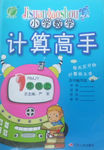题目内容
An 80-year-old man was sitting on the sofa in his house along with his 45-year-old highly educated son.
Suddenly a crow(乌鸦)perched on the tree near their window.
The father asked his son,“What is this? ”
The son replied,“It is a crow.”
After a few minutes,the father asked his son the 2nd time,“What is this? ”
The son said,“Father,I have just now told you ‘It's a crow’.”
After a little while,the old father again asked his son the 3rd time,“What is this? ”
“It's a crow,a crow,a crow.”said the son loudly.
A little after,the father again asked his son the 4th time,“What is this? ”
This time the son shouted at his father,“Why do you keep asking me the same question again and again? ‘IT IS A CROW’. Are you not able to understand this? ”
A little later the father went to his room and came back with an old diary,which he had kept since his son was born. On opening a page,he asked his son to read that page. When the son read it,the following words were written in the diary:
“Today my little son aged three was sitting with me on the sofa,when a crow was sitting on the window. My son asked me 23 times what it was,and I replied to him all 23 times that it was a crow. I hugged him lovingly each time he asked me the same question again and again for 23 times. I did not at all feel annoyed; I rather felt affection for my innocent child.”
1.What does the underlined word “perched” mean in the passage?
A. knocked B. landed
C. hit D. flew
2.Why did the Father ask the same question again and again?
A. Because he couldn't understand what his son said.
B. Because he was too old to remember anything.
C. Because he wanted to make his son angry.
D. Because he wanted to see how patient his son would be.
3.How old was the old man when his son asked him 23 times “What is this”?
A. 80 years old. B. 45 years old.
C. 38 years old. D. 35 years old.
4.What is the most suitable title for the passage?
A. A crow. B. An old man.
C. An old dairy. D. Father's love.
 计算高手系列答案
计算高手系列答案


 world that makes it so active in earthquakes?
world that makes it so active in earthquakes? finally, the earthquake hasn’t to be too deep.
finally, the earthquake hasn’t to be too deep.